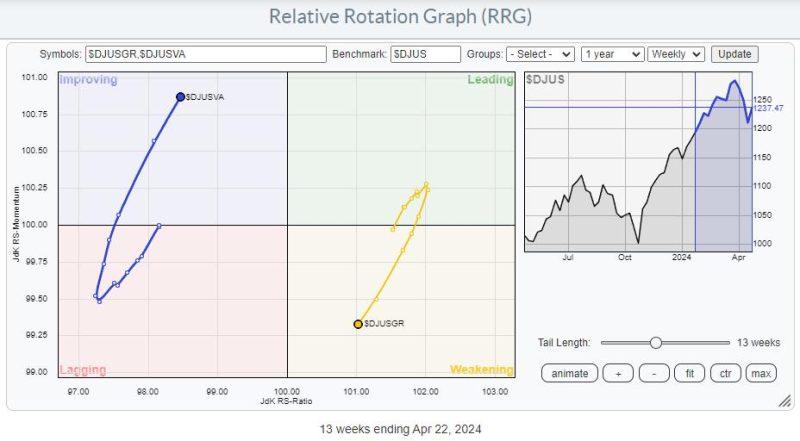In recent market trends, value stocks have been gaining momentum as investors seek out bargains in a volatile market. While this shift signals a potential opportunity for value investors, there are some downside risks that investors should be mindful of as they navigate the market landscape. Let’s take a closer look at some of the key factors contributing to the downside risks for stocks as value takes the lead.
1. **Interest Rate Sensitivity**:
Value stocks are often more sensitive to changes in interest rates compared to growth stocks. As interest rates rise, the present value of future cash flows declines, which can negatively impact the valuation of value stocks. Investors should monitor interest rate movements closely to assess the potential impact on their value-focused holdings.
2. **Economic Uncertainty**:
Value stocks tend to perform well in periods of economic recovery or stability. However, in times of economic uncertainty or downturns, these stocks may face challenges as investors become more risk-averse and seek out safer investments. It’s important for investors to consider the broader economic environment when investing in value stocks.
3. **Industry-specific Risks**:
Certain industries may be overrepresented in value indexes, exposing investors to industry-specific risks. For example, value indexes may have higher concentrations of financial or energy stocks, which can be vulnerable to regulatory changes, commodity price fluctuations, or other industry-specific factors. Diversification across sectors is crucial to mitigate these risks.
4. **Liquidity Concerns**:
Value stocks, particularly those in smaller companies or niche sectors, may have lower liquidity compared to large-cap or growth stocks. This lower liquidity can lead to wider bid-ask spreads and potential challenges in selling the shares at desired prices. Investors should assess the liquidity profile of value stocks in their portfolio to avoid liquidity traps.
5. **Value Trap**:
One of the common pitfalls for value investors is falling into a value trap. A value trap occurs when a stock appears undervalued based on traditional metrics like price-to-earnings ratio, but fails to realize its intrinsic value due to deteriorating fundamentals or other factors. Conducting thorough fundamental analysis and staying vigilant can help investors avoid value traps.
6. **Market Sentiment Shifts**:
Market sentiment can change rapidly, impacting the performance of value stocks. In a risk-off environment, value stocks may underperform growth stocks as investors flock to safer assets. Understanding market sentiment dynamics and having a well-defined investment strategy can help investors navigate through periods of market volatility.
7. **Inflationary Pressures**:
Inflationary pressures can erode the real returns of value stocks over time. While value stocks are often considered a hedge against inflation due to their focus on tangible assets and strong cash flows, persistently high inflation rates can erode the purchasing power of value stocks’ future cash flows. Monitoring inflation indicators is essential for value investors.
8. **Debt Levels**:
Investors should pay attention to the debt levels of value stocks in their portfolio. High debt levels can increase the financial risk of a company, especially during economic downturns or rising interest rates. Companies with excessive debt may struggle to meet their financial obligations, leading to potential stock price declines.
9. **Regulatory Risks**:
Value stocks may be exposed to regulatory risks, especially in regulated industries such as healthcare, energy, or financial services. Changes in regulations, government policies, or legal actions can have a significant impact on the performance of value stocks. Investors should stay informed about regulatory developments that could affect their investments.
10. **Global Events**:
Global events, such as geopolitical tensions, trade disputes, or natural disasters, can have far-reaching implications for value stocks. These events can disrupt supply chains, impact global economic growth, and create market uncertainties that affect the performance of value stocks. Diversifying geographically and staying informed about global events are crucial for risk management.
In conclusion, while value stocks offer attractive opportunities for investors seeking undervalued assets, it’s essential to be aware of the downside risks associated with value investing. By understanding and actively managing these risks, investors can make informed decisions and position their portfolios to weather market fluctuations effectively. Being vigilant, diversified, and attentive to market dynamics are key considerations for investors navigating the world of value investing in today’s evolving market landscape.

